


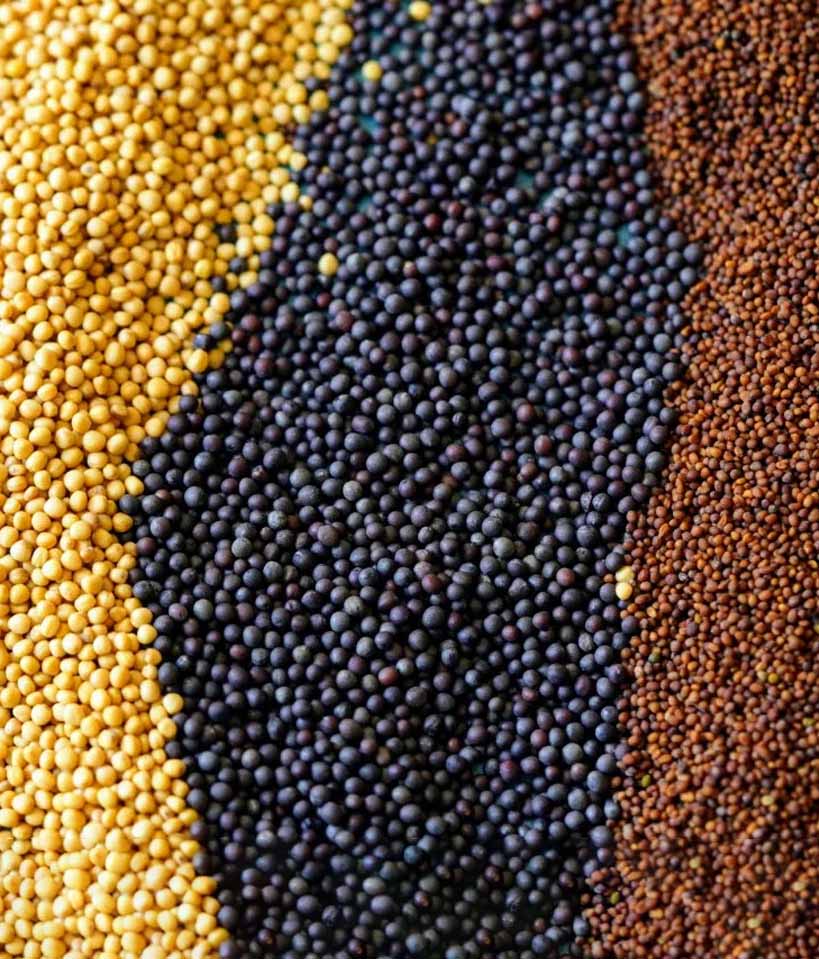
Mustard has a long history throughout the world starting as far back as the Han Dynasty in China as well as in Ancient Egypt where King Tut was buried with mustard seeds. The Romans further spread mustard throughout the Ancient World.
In Medieval Europe, when the world was going crazy for spices from around the world, mustard was one of the spices that everyone could afford as it was easily grown in most temperate regions. Seeds were added to alcohol to create a paste similar to our present day mustard. It was also popular to crush mustard seeds and sprinkle them over cooked foods.
When spices from around the world started becoming more available in Europe, the craze for mustard began to die down. Pope John XXII of Avignon was determined to have mustard at all times, so he created the position of the Pope’s Grand Mustard Maker for his lazy nephew. This kept alive the tradition of Dijon mustard.
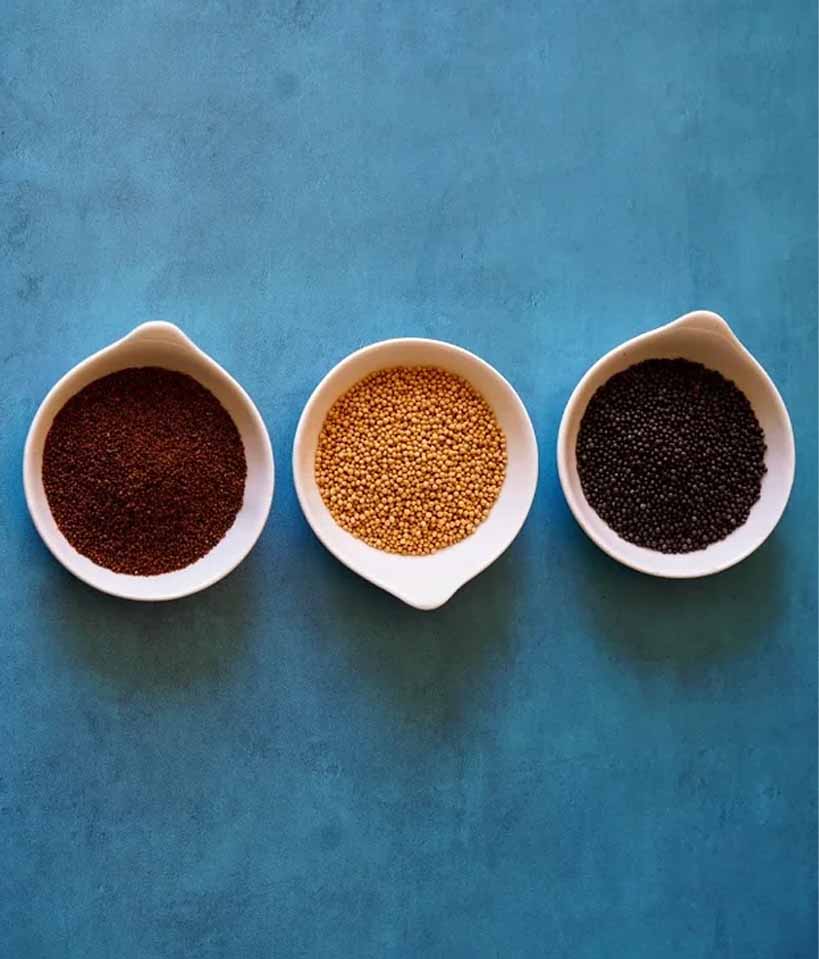
Although more than 40 species of mustard plants grow throughout the world, there are just three which are grown commercially as spices–black, brown, and white mustard seeds.
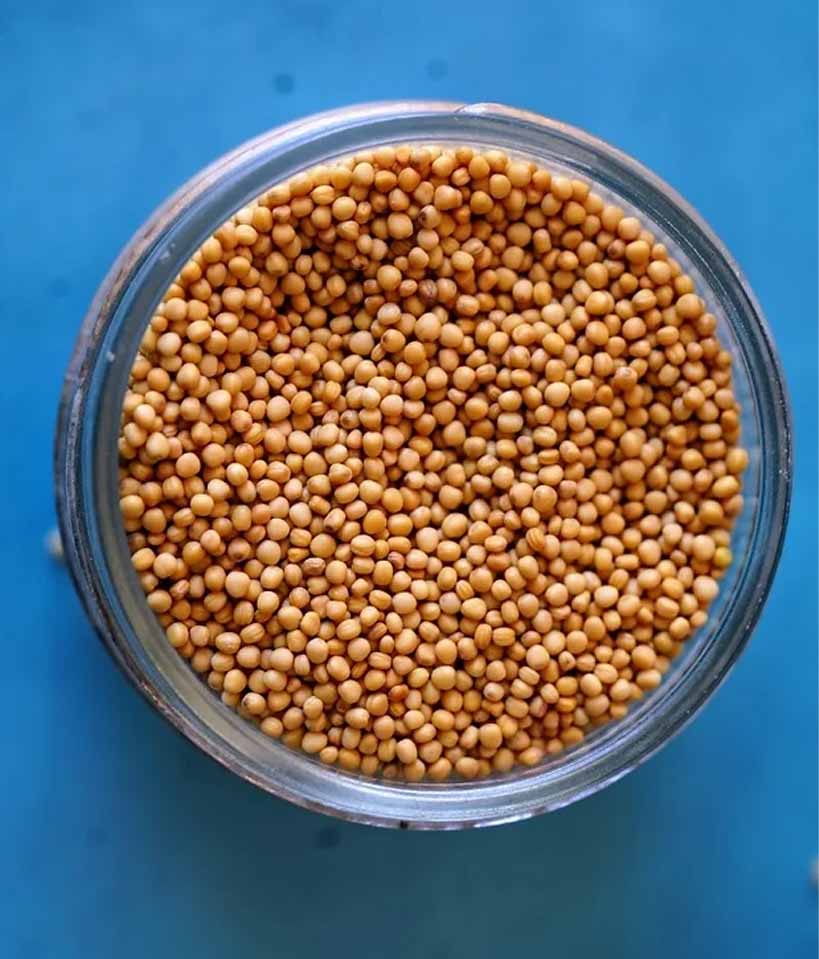
White Mustard Seed is often referred to as Yellow Mustard Seed in the United States. This is the mustard that is made into yellow mustard in the United States and is considered the mildest of the three types of mustard seed.
Native to the Mediterranean, it is believed this seed came to the United States with the Spanish priest, Junipero Serra. Legend says that as he walked the Native American trails up the coast of what would become California, he scattered seeds to mark his way so he could find his way back to Mexico.
Today, most of the world’s white mustard seed is grown across the northern Midwest region of the United States as well as Canada. Almost all of this mustard seed is used to make mustard.
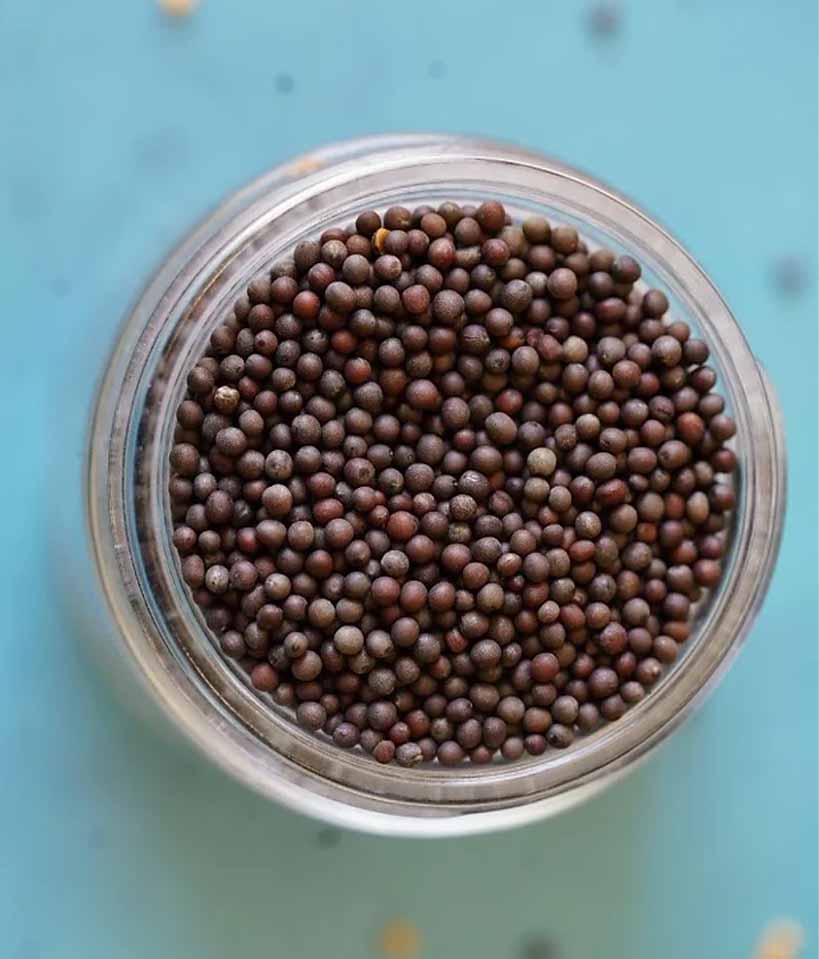
Black Mustard Seed is native to the Middle East and is more pungent than Yellow Mustard Seed. Black Mustard is not as widely available as other mustard seeds as it is harvested by hand. It is a popular spice in Indian cuisine.
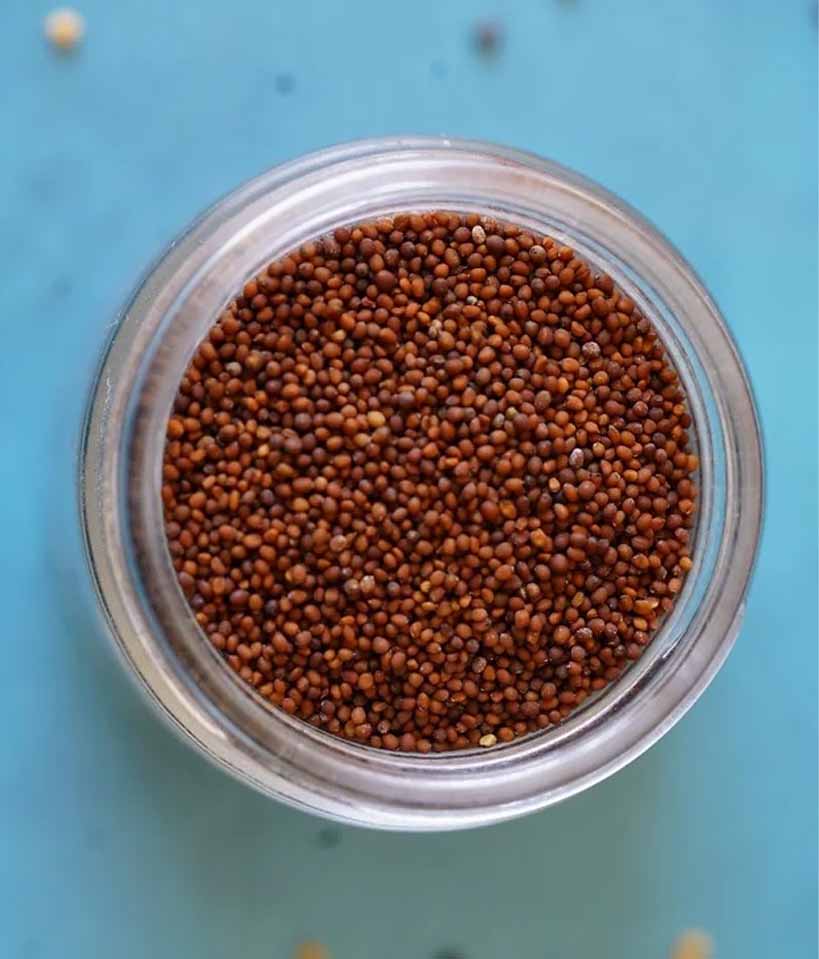
Brown Mustard Seed is popular across Asia. Native to the Himalayas, this is the mustard seed that becomes the hot mustard served in American Chinese restaurants. It is also often mixed with yellow mustard to become grainy mustards in the United States. In Europe, this is the mustard seed used for Dijon mustard as well as English mustard.
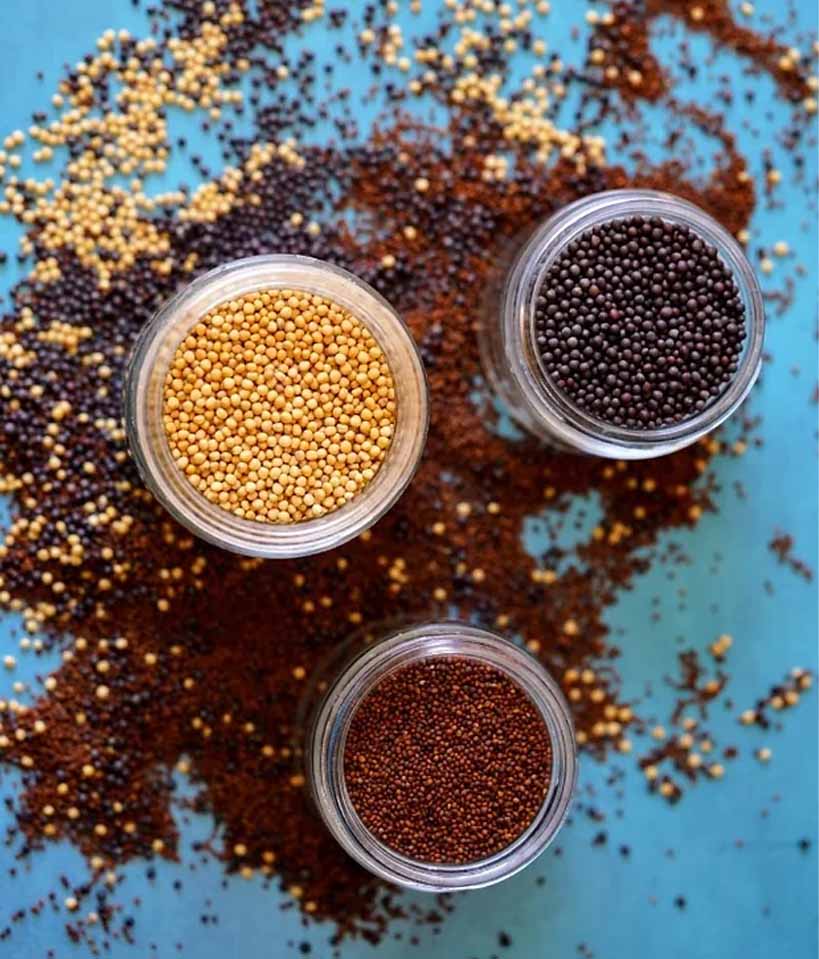
Although mustard is used whole for flavoring in India, around the rest of the world it is known as the basis for the condiment mustard. Also called prepared mustard, mustard is simply ground mustard seeds mixed with a liquid. How the mustard is going to turn out depends on several different factors:
Choice of seeds
As mentioned above, each type of mustard seed has its own level of spiciness. White mustard seed is the mildest; Black mustard seed has a medium level of heat; Brown Mustard seed is considered the spiciest of the mustard seeds.
Choice of liquid
The pungency or spiciness of mustard comes from the enzymes that are formed when mustard oil mixes with liquid. So, when ground mustard seed is mixed straight with water, it is so spicy!
But the enzyme that is formed when mustard oil and water mix isn’t very long-lasting. An acidic liquid slows down this reaction providing a heat that will last.
Think of a fresh Chinese Mustard made at home with only water and mustard powder. This is an extremely hot mustard, but that heat dissipates quickly. Come back to this mustard the next day and its heat will be gone. A Dijon mustard which is mixed with vinegar or wine will not be as hot, but the heat it has will last for months if not years.
Temperature of the Liquid
The temperature of the water or liquid added is also important. Cold water keeps the activated enzymes stable while hot water deactivates the enzymes.
So mustard created with yellow mustard seed, lots of heated vinegar, and hot water will be the mildest mustard while mustard created with black mustard seeds and only cold water will be the spiciest mustard.
If you’d like to learn more about making mustard, check out our How to Make Mustard Article
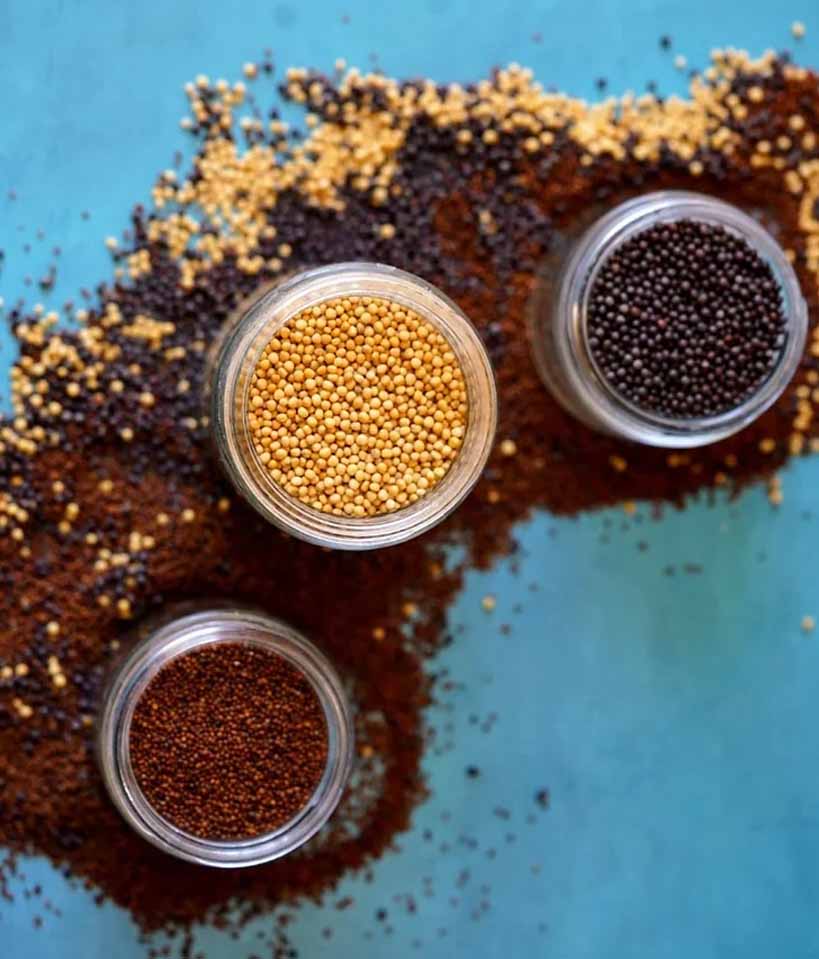
Mustard Seed is a spice that most likely we don’t really think about too often. Yet, these little seeds have provided spice and flavor around the world for thousands of years! And we feel they should be in everyone’s spice rack!
Mustard Seed is just one spice featured in our SpiceScription! When you sign up for SpiceScription you'll receive not only a monthly featured spice, but also a history of the spice, tips on how to use the spice in your kitchen, 3-4 recipes showing you how to use the featured spice, and all the additional spices you'll need to create all those recipes. --And because we love to spoil our customers, look for swag, coupons, and surprises in each box!
Mustard: A Treasure from Burgundy
by Bénédicte Bortoli (Author), Matthieu Cellard (Photographer)
Tag @spicetopia on Instagram and Hastag it #spicetopia so we can see all your recipes.
Pin this recipe and share it with your followers.
Organic, Fair-Trade, Ethically Sourced, Created with Love Spices, Teas, and Locally Crafted Foods
Thank you for visiting our site!